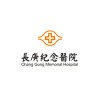
The Effects of Different Exercises on Tissue Mechanics, Strength and Neuropathy Symptoms in Type...
Diabetic FootPeripheral Neuropathy With Type 2 DiabetesTo examine the effects of aerobic exercise and foot exercises in addition to aerobic exercise on lower extremity distal tissue mechanics, muscle strength and neuropathy symptoms in type 2 diabetics with peripheral neuropathy. Subjects will be divided into three groups through randomization.Subjects in the 1st group will be included in the control group and will continue their routine medical treatment for 12 weeks. Subjects in the 2nd group, in addition to their medical treatment, only aerobic exercise training,subjects in the 3rd group will be given aerobic exercise training and exercises for the foot and ankle in addition to their medical treatment. After 12 weeks of training, subjects will be followed for another 12 weeks. subjects will be evaluated before treatment, at 12 and 24 weeks.

A Study to Evaluate the Efficacy and Safety of Renexin CR in Patients With Acute Non-cardioembolic...
Ischemic StrokeA study to Evaluate the Efficacy and Safety of Renexin CR in patients with Acute Non-cardioembolic Ischemic Stroke

NEURESCUE Device as an Adjunct to In-Hospital Cardiac Arrest (ARISE)
Cardiac ArrestCardiopulmonary Arrest1 moreThe NEURESCUE device is the first intelligent catheter for aortic balloon occlusion, an emergency technique that supercharges blood flow to the heart and brain within one minute from deployment. The catheter-based device is delivered via the femoral artery, temporarily inflating a soft balloon in the descending aorta to redirect blood flow towards the upper body. The objective of this study is to investigate the feasibility of the NEURESCUE device as an adjunct to Advanced Cardiac Life Support (ACLS) in adults with cardiac arrest.

INSIGHTFUL-FFR Clinical Trial
Coronary Artery DiseaseAcute Coronary SyndromeRecently, a new device for measuring physiological lesion severity, the pressure microcatheter, was introduced. The pressure microcatheter provides similar information to the conventional measurement technique but differs as it is easily advanced on a customary coronary wire and simplifies pullback maneuvers. The pressure microcatheter has been shown to provide comparable FFR results to pressure wires. Insightful-FFR is an investigator-driven, multicenter, randomized, open-label and prospective trial of patients with stable coronary artery disease or stabilised non-ST elevation acute coronary syndrome (ACS) with epicardial stenosis considered for PCI aiming at comparing clinical outcomes between pressure microcatheter and pressure wire-guided strategies. The study hypothesis states that the use of a Pressure Microcatheter for clinical decision making would be non-inferior to pressure wire-based strategy After determining the presence of a coronary artery disease/ stabilized acute coronary syndrome, patients will be randomized to use a pressure microcatheter (investigational device) or a pressure wire (comparator) to guide and optimize percutaneous coronary intervention (PCI). Patients will be followed up in hospital at 12 months and yearly until five years.

Effect of Renal Denervation on Stress, Hypertension and Anxiety Management
Hypertension ArterialAnxiety1 moreThe ERSHAM (Effect of Renal Denervation on Stress, Hypertension and Anxiety Management) is a single-center, interventional, open-label, randomized controlled trial that will be conducted at the Hypertension Unit "ESH Excellence Center'', 1st Cardiology Department of the Medical School of the National and Kapodistrian University of Athens at the General Hospital of Athens "Hippokration", which is the reference center for uncontrolled hypertension and for sympathetic renal denervation (RDN) in our region. Sixty (60) consecutive patients aged 30-70 years with uncontrolled arterial hypertension either under anti-hypertensive treatment with 1 drug [at least 50% of maximum manufacturer's recommended dosage of an angiotensin-converting enzyme inhibitor (ACEI)/ angiotensin II receptor blocker (ARB) or a calcium channel blocker (CCB)] or naïve from antihypertensive treatment and HADS (Hospital anxiety and depression scale) anxiety subscore ≥ 8 will be enrolled (Figure 1). Patients will be randomized in a 1: 1 ratio to endovascular ultrasound RDN (Paradise renal denervation system, ReCor, CA, USA) (RDN) (n= 30) or to control group (n= 30). Baseline clinical data, cardiovascular risk factors, medical history as well as medication will be recorded in each group. After the randomization, patients who will be randomized to RDN group will undergo a computed tomography angiography (CTA) or magnetic resonance angiography (MRA) of the renal arteries in order to assess whether the renal arteries' anatomy is suitable for RDN by using the Paradise system. The images of the CTA/MRA will be uploaded onto BIOCLINICA web-based portal in order to optimize device use (RDN catheter) and location of ablations. Patients will not change their antihypertensive medications during the 3 months follow -up. After that, their management will be evaluated based on the current 2018 ESC/ESH guidelines. Possible RDN-related adverse events will be recorded during the follow-up period. Blood pressure (BP) will be measured by office BP measurements as well as 24-hour ambulatory blood pressure monitoring. Anxiety and depression will be evaluated by the self-assessment hospital anxiety and depression scale (HADS). Stress management will be evaluated via Perceived Stress Scale-14 (PSS-14). To assess the quality of life (QoL) the health status questionnaire (SF-12) will be used. The social readjustment rating scale will be used in order to evaluate the probability of developing a stress-related disorder during the follow-up period. Finally, a questionnaire for personal stress due to high blood pressure will be applied at the baseline and at the end of the follow-up period. Patients will be followed-up for 6 months after the randomization. A total of three (3) follow-up visits for each patient will be scheduled during the 6-month follow-up period of the study [1st (adverse events review), 3rd, and 6th month after the randomization). If there is a failure in reaching the office BP <140/90mmHg at the 3rd and 6th month, the antihypertensive therapy will be reevaluated according to the current ESH/ESC Guidelines. All patients will give written informed consent and the study will be organized according to ethical considerations, as described in the Declaration of Helsinki for human medical studies, and the protocol will be approved by the institutional medical ethics committee.

The Role of Anifrolumab in Improving Markers of Vascular Risk in Patients With Systemic Lupus Erythematosus...
Systemic Lupus ErythematosusCardiovascular Disease1 moreBackground: People with systemic lupus erythematosus (SLE) are at risk of developing complications in their blood vessels. This can increase the risk of heart attacks or stroke. No medications have been effective at reducing this risk in people with lupus. Objective: To test whether a drug (anifrolumab) can improve blood vessel function and reduce blood vessel inflammation in people with SLE. Eligibility: People aged 18 to 80 years with SLE. Design: Participants will undergo screening. They will have a physical exam. They will have blood and urine tests. They will have a test of their heart function and a chest X-ray. They will answer questions about their SLE symptoms. Participants will visit the clinic 9 times in 8 months. After screening, visits will be 4 weeks apart. Each visit may take up to 4 hours. Participants will receive infusions from a tube attached to a needle inserted into a vein in the arm (IV). Some will receive anifrolumab. Others will receive a placebo treatment. They will not know which one they are getting. At some visits they will have additional tests: CAVI (cardio-ankle vascular index) tests blood vessel function. Participants will lie still for 20 minutes. Small electrodes will be placed on both wrists with stickers. A microphone will be placed on their chest. Blood pressure cuffs will be wrapped around their ankles and arms. FDG-PET/CT is an imaging procedure. Participants will receive a substance through an IV line. They will lie on a table for 110 minutes while a machine captures images of their body.

Connectivity in Cranioplasty
Acquired Brain InjuryTraumatic Brain Injury2 moreAn Exploratory Interventional study to assess the effects of cranioplasty on brain network connectivity, neuropsychological and motor functioning in patients with severe acquired brain injury with pre-, post-cranioplasty and 6 months follow-up assessments.

Asymptomatic Carotid Stenosis and Mobility Function With Exercise Intervention
Asymptomatic Carotid Stenosis (50-69%)Mobility ImpairmentModerate (50-69%) asymptomatic carotid artery stenosis (ACAS) is an important and under-appreciated contributor to balance and mobility dysfunction. This is significant because declines in balance and mobility are a significant predictor of falls, disability, loss of independence, and death in older adults. Further, falls and fall-related injuries in older adults cost approximately 50 billion dollars annually in the United States, and are the leading cause of adverse events reported by the Veterans Health Administration. This proposal seeks to: 1) investigate the impact of a supervised aerobic and challenging balance exercise program on balance and mobility function in patients with moderate ACAS; and 2) elucidate whether these changes are related to changes in cerebral perfusion. With 830,000 Veterans estimated to have moderate ACAS and at risk for balance and mobility dysfunction and increased falls, the findings from this study could have significant impacts on the clinical management, quality of life, and functional independence of Veterans with moderate ACAS.

A Trial of Prednisolone in Combination With SPI-62 or Placebo in Subjects With Polymyalgia Rheumatica...
Polymyalgia RheumaticaThis will be a single-blind, placebo-controlled phase 2 trial to compare prednisolone effects with and without SPI-62 in subjects with PMR.

Clinical Effects of Combined Kinesiotaping and Steroid Injection in Stroke Patients With Hemiplegic...
StrokeHemiplegic Shoulder PainThe aims of this study is to investigate sono-guided shoulder steroid injection combined with Kinesiotaping applications in reducing shoulder pain, improving functional performance on upper extremity and quality of life in stroke patients with hemiplegic shoulder pain.
